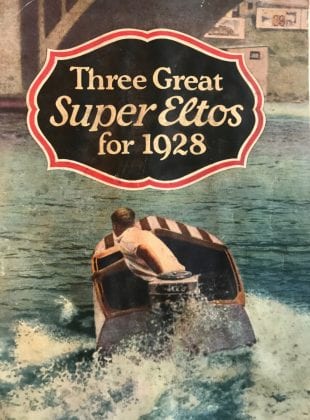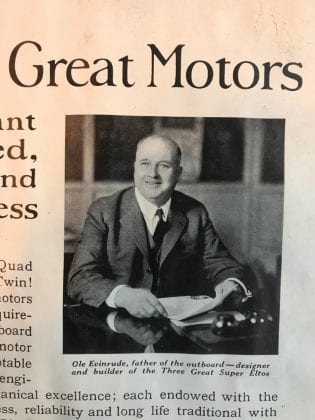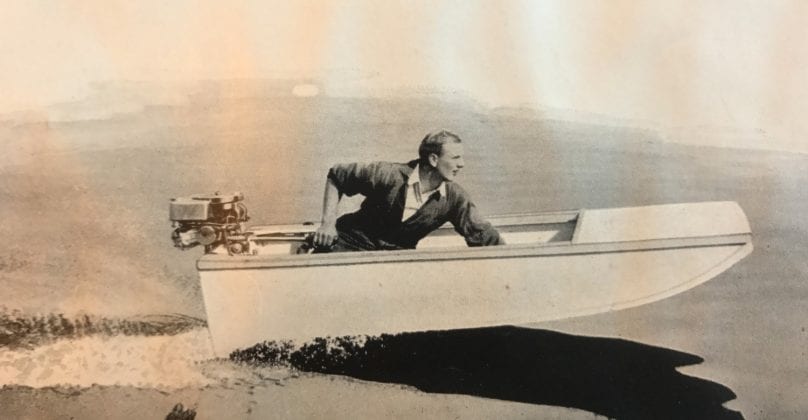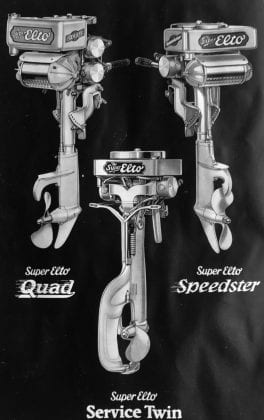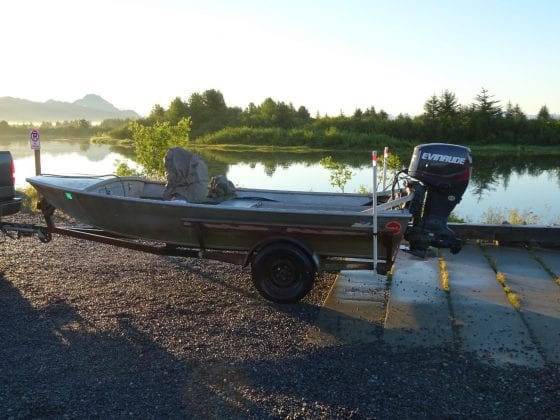Duck hunting season begins on Sept. 1, and the silver salmon fishing has already shifted into high gear on the Eyak River and one of its key tributaries, the Ibeck.
Many sportsman seeking fish or fowl will be heavily dependent on an invention over 100 years old. Ole Evinrude, born Ole Andreassen Aaslundeie in Norway in 1877, is credited with creating the first outboard motor in 1908.
Young Ole immigrated to America in 1881 with his family, and by age 16, was working in machinery stores and studying engineering on his own in Madison, Wisconsin. In 1900, he co-founded the custom engine firm Clemick & Evinrude, and by 1907 had developed his first gasoline-powered two-stroke outboard of steel and brass, that had a flywheel crank to start the engine.
The story goes his invention was inspired by rowing a boat across a small lake near Wisconsin on a hot day to get ice cream for his girlfriend.
By 1912, his firm employed 300 workers. One was named Arthur Davidson, who loved to tinker with motorcycles, and went on to Harley-Davidson fame.
In 1919, Evinrude invented a more efficient and lighter two-cylinder, and having sold his part in Clemick & Evinrude, founded the ELTO Motor Company. For years, listening to local old-timers’ pronunciation, I always thought it was the ALTO motor. ELTO, in fact, stands for Evinrude Light Twin Outboard, which makes more sense than the acronym SPAM, whose meaning is still a well-kept Hormel Packing Company secret.
Inspiration to research the ELTO history came from one of my usual sources, Don Sjostedt, who supplied me with a 32-page booklet-style catalog found in local building demolition. Its title: “Three Great Super Eltos for 1928.”
Page two of this gem shows The Speedster, the Quad and the Service Twin powering various very small craft at mostly frightening speeds, and there on page three is nattily-clad Ole himself. My favorite illustration is on page six, showing a boater leaning forward to balance an 8-foot craft going 30 mph to set “B” Class Championship records using the 62 pound Speedster model that develops an amazing seven horsepower – “only 9 pounds per horse!”
One has to wonder if the U.S. Coast Guard was created soon after. In fact, President Woodrow Wilson signed into law the Act to Create the Coast Guard on Jan. 28 1915, which coincides closely with the growing outboard industry.
Details on Speedster specifications include this note, which brought back a flood of memories: “Motor tilts through an angle of 135 degrees, to allow easy changing of propeller or shear pins.”
When Dad first took my brother and I duck hunting down Alaganik in 1954, it was in a small cedar life boat the Coast Guard had tossed away at the burn pile, as it’s stern had been crushed. Dad had replaced the damaged aft section with a transom, and mounted a small 10 horse Evinrude that pushed the light craft along at a fine clip.
Back then there was lots of water in Alaganik, and also a considerable number of stumps and hazards in its upper reaches near the McKinley River junction, which we invariable seemed to find, leaving before dawn and returning after dusk.
The motor no longer tilted to 135 degrees, but Dad always carried several shear pins and cotter keys in his pocket. After the roar of a collision with submerged objects hidden in the murky waters brought us to a screeching halt, he was quite adept at tipping the motor up and replacing them, while we held a spotlight so he could see what he was doing. Although more than once he went over the top of his hip boots in the process.
Jet units have replaced the demand for shear pins, but there is still a jar of them at our Pete Dahl cabin, along with a whole row of damaged outboard propellers nailed on a beam across the ceiling. And for many years, Santa seemed to always place a new propeller adorned with a bright red ribbon under the Christmas tree.
These days I run a new model 90 hp E-TEC on my metal riverboat. Many others sport Yamahas or Hondas. The letter “E” in E-TEC stands for Evinrude.
And just think. I’m cruising down the river in style thanks to Ole trying to find a way to get an ice cream cone to his girlfriend — and eventual wife — Bess, before it melted.
You gotta love those Norwegians.
Want more Cordova Chronicles? Click here to view the archives.
